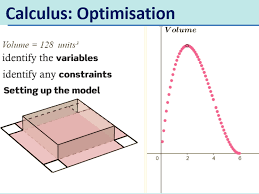The Power of Optimisation in Achieving Success
Optimisation is a key concept that plays a crucial role in various aspects of our lives, from personal development to business strategies. It involves the process of making something as effective and efficient as possible, often through systematic planning and improvement.
In the realm of business, optimisation is essential for maximising productivity, reducing costs, and enhancing overall performance. By analysing processes, identifying bottlenecks, and implementing streamlined solutions, companies can achieve greater efficiency and profitability.
Moreover, optimisation extends beyond the corporate world and into our daily routines. Whether it’s managing time effectively, organising tasks efficiently, or prioritising goals strategically, optimisation helps us make the most of our resources and capabilities.
When it comes to digital technology, optimisation is particularly significant. From website performance to search engine rankings, businesses rely on optimisation techniques to enhance user experience and drive traffic. By fine-tuning algorithms, improving loading speeds, and refining content strategies, they can stay ahead in today’s competitive online landscape.
On a personal level, embracing the principles of optimisation can lead to increased productivity, reduced stress levels, and improved well-being. By setting clear objectives, eliminating distractions, and leveraging tools for efficiency, individuals can unlock their full potential and achieve their goals more effectively.
In conclusion, optimisation is a powerful tool that empowers us to work smarter, not harder. By continuously seeking ways to refine processes, eliminate waste, and maximise outputs, we pave the way for success in all areas of life. Embracing a mindset of optimisation can propel us towards our aspirations and unlock new opportunities for growth and advancement.
Six Essential Tips for Effective Optimisation: Enhancing Audience Engagement and Performance
- 1. Analyse and understand your target audience.
- 2. Optimise website loading speed for better user experience.
- 3. Use relevant keywords strategically in your content.
- 4. Regularly update and refresh your content to keep it current.
- 5. Utilise meta tags effectively for search engine optimisation (SEO).
- 6. Monitor and analyse performance metrics to make informed decisions.
1. Analyse and understand your target audience.
To optimise your strategies effectively, it is crucial to begin by analysing and comprehensively understanding your target audience. By delving into the demographics, preferences, behaviours, and needs of your audience, you can tailor your approach to resonate with them more effectively. This insightful analysis enables you to create targeted content, products, and services that are aligned with the interests and desires of your audience, ultimately leading to enhanced engagement, loyalty, and success in reaching your goals.
2. Optimise website loading speed for better user experience.
Optimising website loading speed is a crucial tip for enhancing user experience. In today’s fast-paced digital landscape, users expect websites to load quickly and smoothly. By reducing loading times, businesses can keep visitors engaged, improve retention rates, and ultimately drive conversions. A faster website not only provides a better user experience but also positively impacts search engine rankings, making it essential for achieving online success. By prioritising website loading speed optimisation, businesses can create a positive first impression and ensure that users have a seamless browsing experience.
3. Use relevant keywords strategically in your content.
To optimise the visibility and searchability of your content, it is essential to strategically incorporate relevant keywords within your text. By conducting thorough keyword research and identifying terms that align with your target audience’s search queries, you can enhance the discoverability of your content online. Placing these keywords strategically throughout your writing not only improves SEO performance but also ensures that your message resonates effectively with readers who are seeking information on specific topics. This practice of integrating relevant keywords thoughtfully into your content contributes to a more engaging and impactful user experience, ultimately driving traffic and engagement to your platform.
4. Regularly update and refresh your content to keep it current.
To optimise the effectiveness of your online presence, it is crucial to adhere to Tip 4: regularly update and refresh your content to keep it current. By consistently revisiting and enhancing your content, you not only maintain relevance in the eyes of your audience but also improve search engine visibility. Fresh and up-to-date content demonstrates your commitment to providing valuable information, engages visitors, and encourages return visits. This proactive approach to content management not only enhances user experience but also contributes to the overall success of your digital strategy.
5. Utilise meta tags effectively for search engine optimisation (SEO).
Effective utilisation of meta tags is a crucial aspect of search engine optimisation (SEO) strategy. Meta tags provide search engines with valuable information about the content of a webpage, helping them understand its relevance to specific search queries. By optimising meta tags such as title tags, meta descriptions, and meta keywords with relevant keywords and compelling content, website owners can improve their chances of ranking higher in search engine results pages. This attention to detail in utilising meta tags not only enhances visibility but also increases the likelihood of attracting organic traffic to the website, ultimately contributing to its overall online success.
6. Monitor and analyse performance metrics to make informed decisions.
To optimise effectively, it is crucial to monitor and analyse performance metrics to make informed decisions. By tracking key indicators and analysing data, individuals and businesses can gain valuable insights into the effectiveness of their strategies. This data-driven approach allows for identifying areas for improvement, making informed adjustments, and ultimately enhancing overall performance and efficiency. Monitoring performance metrics provides a clear picture of progress towards goals, enabling proactive decision-making based on real-time information for optimal results.
